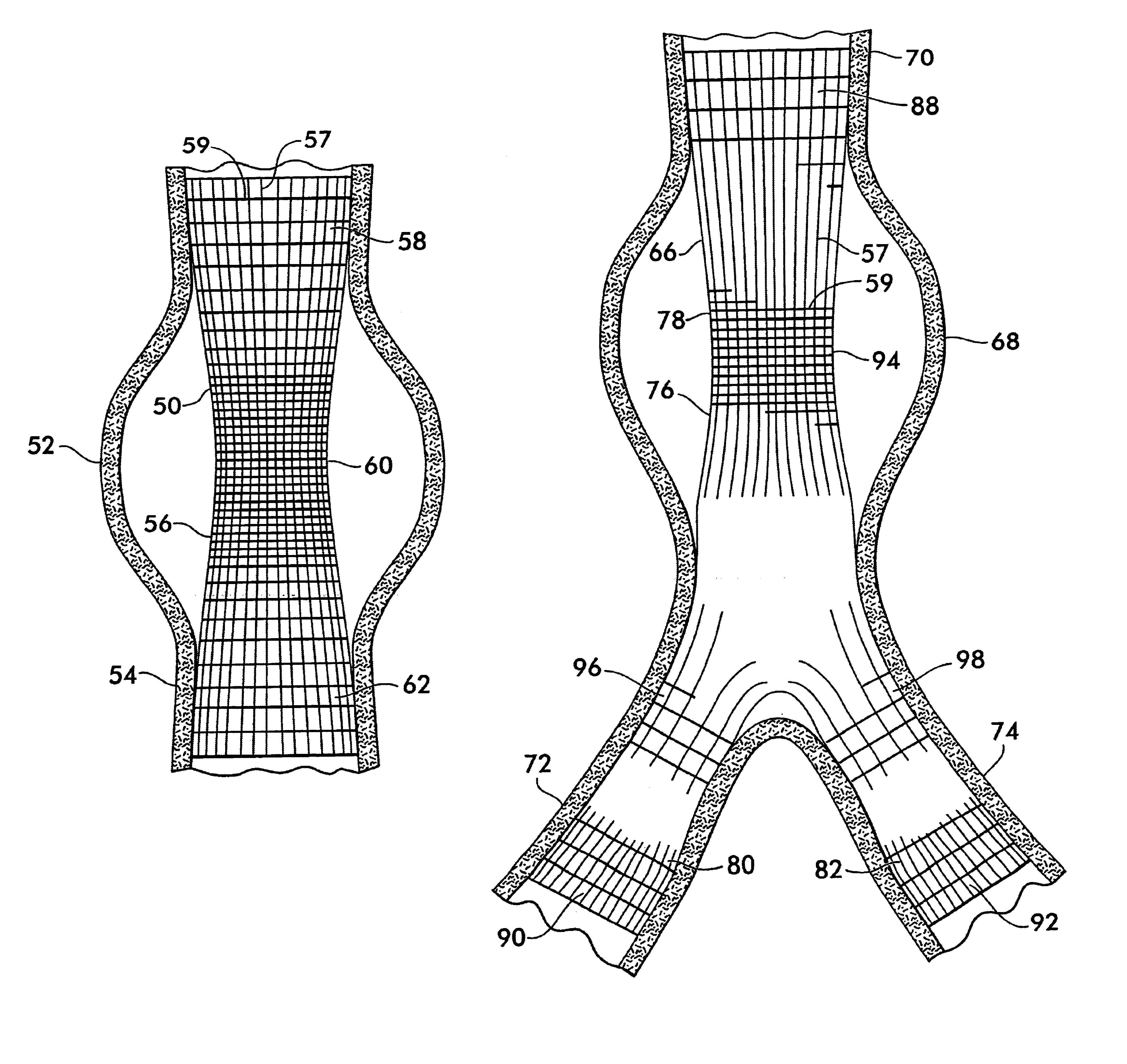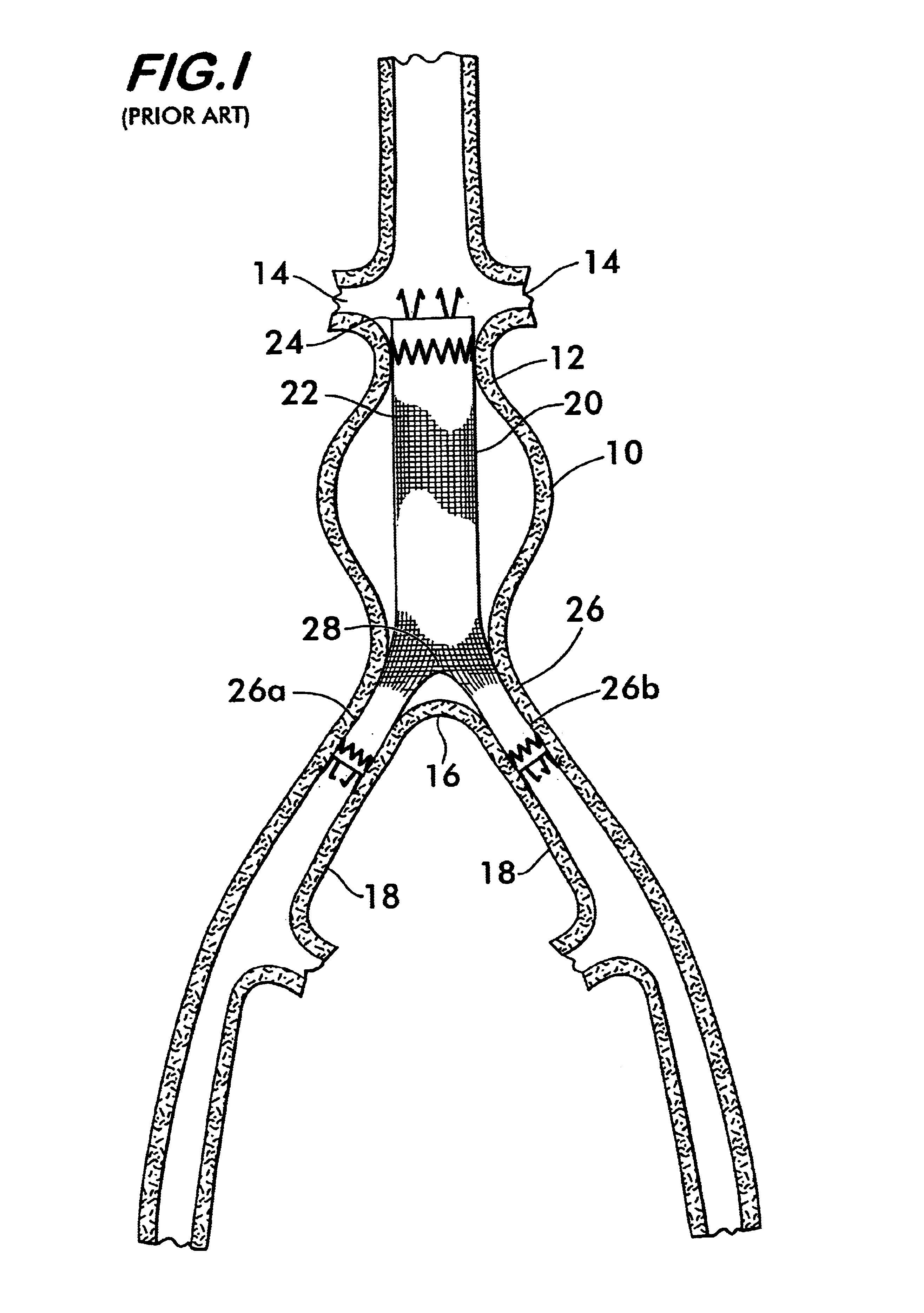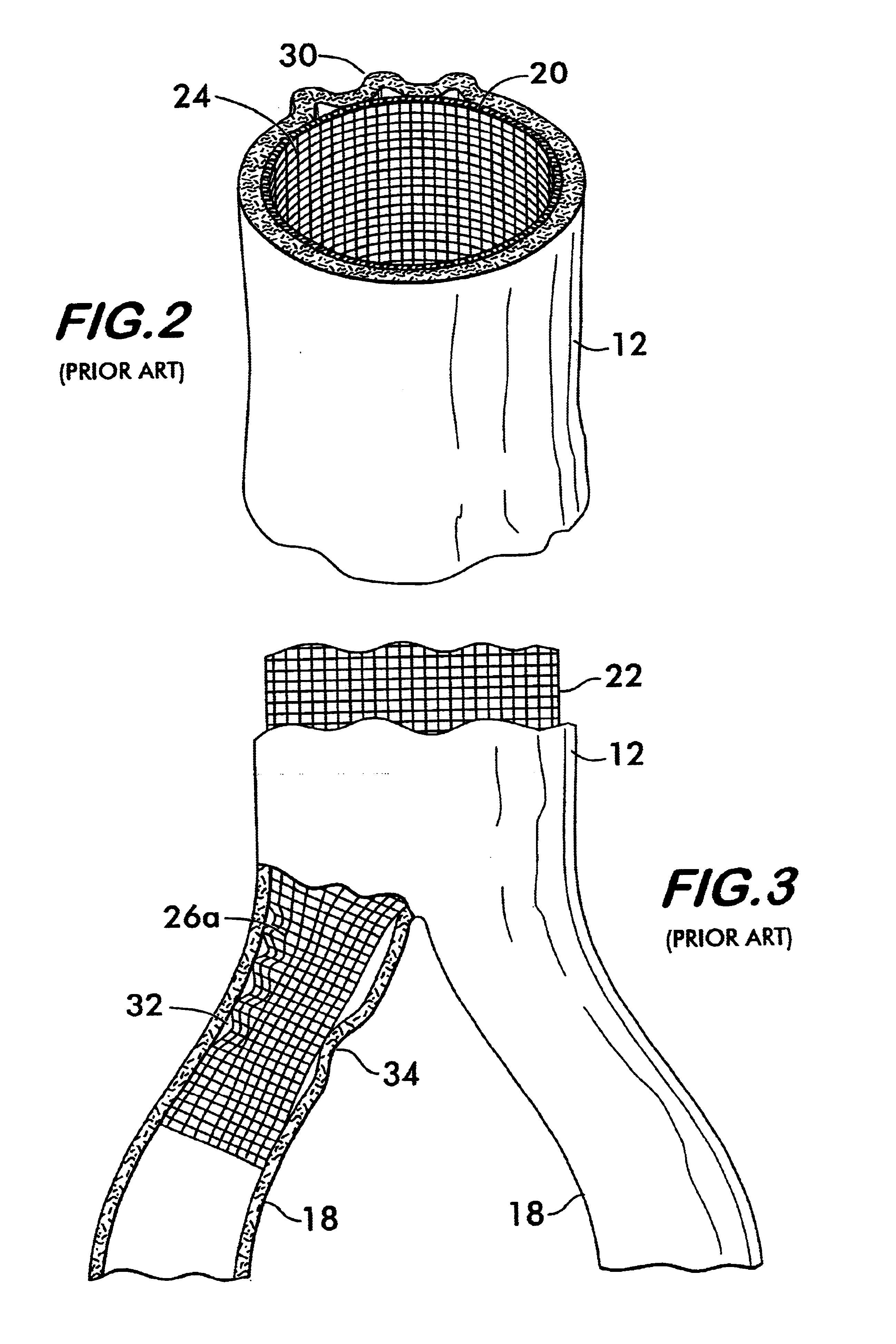Woven tubular graft with regions of varying flexibility
a technology of flexible woven tubules and grafts, applied in the field of grafts, can solve the problems of inability to stretch elastically in either the radial or longitudinal directions of woven tubes, the morbidity rate still greater than 50%, and the inability of woven tubes to stretch elastically in the radial or longitudinal directions
- Summary
- Abstract
- Description
- Claims
- Application Information
AI Technical Summary
Benefits of technology
Problems solved by technology
Method used
Image
Examples
Embodiment Construction
The disadvantages of the woven tube enumerated above can be avoided while maintaining its advantages of strength, impermeability and minimal bulk by selectively controlling the elastic properties of the tube during the weaving process to provide a tube having relatively greater flexibility over certain regions and relatively less flexibility in other regions.
FIG. 7 shows an endoluminal stent graft 50 used to treat a fusiform aneurysm 52 in an artery 54. Stent graft 50 comprises a tube 56 woven from a plurality of warp yarns 57 and fill yarns 59 and having three regions, 58, 60 and 62, of differing flexibility. Regions 58 and 62 form the upstream and downstream ends, respectively, of the tube 56, where the tube attaches circumferentially around the artery 54 and must form a seal which will prevent leaks into the aneurysm 52. As noted above, arteries are not usually round, may have calcified occlusions, are different in size from one another and may tend to expand in diameter with age...
PUM
| Property | Measurement | Unit |
|---|---|---|
| length | aaaaa | aaaaa |
| length | aaaaa | aaaaa |
| length | aaaaa | aaaaa |
Abstract
Description
Claims
Application Information
 Login to View More
Login to View More - R&D
- Intellectual Property
- Life Sciences
- Materials
- Tech Scout
- Unparalleled Data Quality
- Higher Quality Content
- 60% Fewer Hallucinations
Browse by: Latest US Patents, China's latest patents, Technical Efficacy Thesaurus, Application Domain, Technology Topic, Popular Technical Reports.
© 2025 PatSnap. All rights reserved.Legal|Privacy policy|Modern Slavery Act Transparency Statement|Sitemap|About US| Contact US: help@patsnap.com



